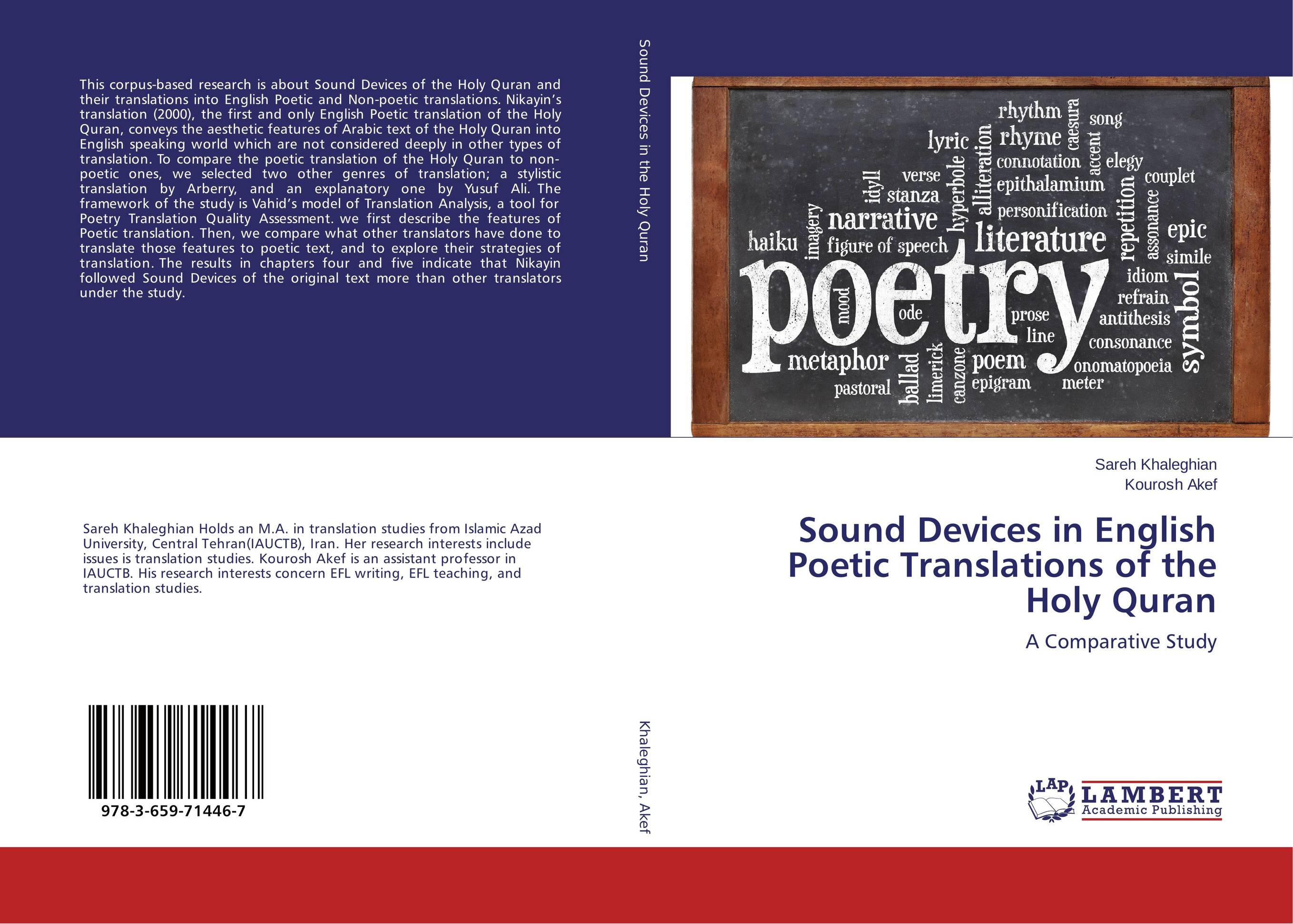| Поиск по каталогу |
|
(строгое соответствие)
|
- Профессиональная
- Научно-популярная
- Художественная
- Публицистика
- Детская
- Искусство
- Хобби, семья, дом
- Спорт
- Путеводители
- Блокноты, тетради, открытки
Sound Devices in English Poetic Translations of the Holy Quran. A Comparative Study

В наличии
| Местонахождение: Алматы | Состояние экземпляра: новый |

Бумажная
версия
версия
Автор: Sareh Khaleghian and Kourosh Akef
ISBN: 9783659714467
Год издания: 2015
Формат книги: 60×90/16 (145×215 мм)
Количество страниц: 196
Издательство: LAP LAMBERT Academic Publishing
Цена: 29007 тг
Положить в корзину
Позиции в рубрикаторе
Отрасли знаний:Код товара: 150382
| Способы доставки в город Алматы * комплектация (срок до отгрузки) не более 2 рабочих дней |
| Самовывоз из города Алматы (пункты самовывоза партнёра CDEK) |
| Курьерская доставка CDEK из города Москва |
| Доставка Почтой России из города Москва |
Аннотация: This corpus-based research is about Sound Devices of the Holy Quran and their translations into English Poetic and Non-poetic translations. Nikayin’s translation (2000), the first and only English Poetic translation of the Holy Quran, conveys the aesthetic features of Arabic text of the Holy Quran into English speaking world which are not considered deeply in other types of translation. To compare the poetic translation of the Holy Quran to non-poetic ones, we selected two other genres of translation; a stylistic translation by Arberry, and an explanatory one by Yusuf Ali. The framework of the study is Vahid’s model of Translation Analysis, a tool for Poetry Translation Quality Assessment. we first describe the features of Poetic translation. Then, we compare what other translators have done to translate those features to poetic text, and to explore their strategies of translation. The results in chapters four and five indicate that Nikayin followed Sound Devices of the original text more than other translators under the study.
Ключевые слова: Poetry, rhyme, Rhythm, The Holy Quran, translation strategies, Rhyme Scheme, Iambic Pentameter



